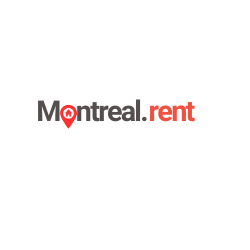The Ultimate Rental Checklist Before Signing a Lease in Canada (2025 Guide)
Renting an apartment is an exciting step, whether you’re moving into your first place or relocating to a new city. But before you sign on the dotted line, it’s crucial to protect yourself — both legally and financially — by doing your homework. This ultimate rental checklist will help you make sure everything is in order before signing a lease in Canada, saving you from hidden fees, legal trouble, or future regrets.
🔍 1. Understand What a Lease Agreement Is
Before you even tour a unit, understand that a lease is a legal contract between a tenant and a landlord. It outlines the terms of your tenancy, including rent amount, duration, and responsibilities. Once you sign it, you’re legally bound to follow the rules — and so is your landlord.
Key lease terms to look for:
- Monthly rent amount
- Lease duration (fixed-term vs month-to-month)
- Security deposit or key deposit
- Utilities included
- Pet policy
- Maintenance responsibilities
Rental Checklist Priority Diagram
Understanding the most important steps before signing a lease

- 100: Read and Understand the Lease Agreement
- 95: Inspect the Unit Thoroughly
- 90: Verify All Costs and Additional Fees
- 88: Know Your Tenant Rights by Province
- 85: Request Lease Copy in Advance
- 83: Confirm Maintenance Responsibilities
- 80: Check Pet Policy
- 78: Verify Landlord Legitimacy
- 75: Document Everything (Photos, Reports, Receipts)
- 70: Understand Move-In/Move-Out Protocols

📋 2. Request a Copy of the Lease in Advance
Don’t wait until lease signing day to see the document. Ask for a copy of the lease at least 48 hours before your meeting so you can:
- Review it at your own pace
- Compare it to provincial tenancy laws
- Ask questions or request changes
📌 Tip: In most provinces, such as Ontario, landlords must use a standard lease form, available from the government.
🏠 3. Inspect the Unit Thoroughly
Never sign a lease without seeing the unit in person. Virtual tours are helpful, but they may not show the real condition of the apartment.
Use this rental inspection checklist:
✅ Check for signs of mold, water damage, or pest infestations
✅ Open every cupboard, faucet, and appliance
✅ Test all lights, outlets, and smoke detectors
✅ Verify heating, ventilation, and A/C systems
✅ Inspect windows and doors for drafts or damage
✅ Ensure bathroom and kitchen plumbing works properly
✅ Note any damage and take photos or videos
💰 4. Ask About All Costs Upfront
Rent isn’t your only expense. Confirm exactly what’s included and what isn’t.
Questions to ask:
- Are utilities (electricity, water, heat) included?
- What’s the average monthly utility bill?
- Is there Wi-Fi or cable included?
- Are there extra fees for parking, storage, or pets?
- Is tenant insurance required?
📄 5. Read the Fine Print (Yes, All of It)
Many renters make the mistake of skimming the lease. Don’t. Read every page, and look for red flags like:
🚫 “No guests overnight” policies
🚫 Early termination penalties
🚫 “As-is” clauses that excuse the landlord from repairs
🚫 Unreasonable late fees
🐕 6. Clarify the Pet Policy
Even if a landlord verbally says pets are allowed, it must be in writing. If it isn’t mentioned in the lease, you could face eviction or fines later.
Ask:
- What types and sizes of pets are allowed?
- Are there any pet deposits or fees?
- Can the landlord enter the unit if your pet is home?
🧹 7. Confirm Who Handles Maintenance and Repairs
Who do you call if your heater breaks in January? Ask about:
- 24/7 emergency repair protocol
- Snow removal and lawn care
- Who handles garbage, recycling, and compost pickup
- Average response time for non-emergency requests
🪪 8. Verify Landlord Legitimacy
Scams are real — especially in large cities. Protect yourself by verifying:
- The landlord owns the unit (check municipal property records)
- The rental isn’t already occupied
- The unit matches the listing description
- You never pay cash — use a bank transfer with a written receipt
🏢 9. Know Your Tenant Rights by Province
Each Canadian province has its own residential tenancy laws. Familiarize yourself with:
- Maximum rent increase limits
- Eviction rules
- Entry notice requirements
- Rules for lease termination or subletting
📌 Resources:
- Ontario: www.ontario.ca/page/renting-ontario-your-rights
- Quebec: www.tal.gouv.qc.ca
- British Columbia: www.rto.gov.bc.ca
📅 10. Don’t Forget to Document Everything
Before you move in, do a walk-through with the landlord and:
- Fill out a move-in condition report
- Take timestamped photos or videos of every room
- Get all agreements in writing, including verbal promises
- Keep a copy of your lease, payment receipts, and all communication
🔚 Final Thoughts: Never Rush to Sign
Signing a lease is a big commitment. If anything feels off, walk away. Trust your instincts, ask questions, and don’t be afraid to negotiate.
With this checklist in hand, you’ll be fully prepared to find a safe, affordable, and legal rental — without surprises down the road.
🔎 Frequently Asked Questions (FAQ)
1. Is a lease legally binding in Canada?
Yes. Once signed, both tenant and landlord are legally bound to its terms.
2. Can I break a lease early?
Yes, but only under specific conditions. Most provinces require proper notice or a valid reason.
3. What happens if I don’t read the lease carefully?
You could face unexpected fees, responsibilities, or legal action.
4. Should I get renters insurance?
Yes. Many landlords require it, and it protects your belongings in case of fire, theft, or damage.
